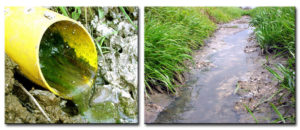Pancake tortoise breeding programs in both zoos and private collections are plagued by the low fertility rates that are common among captive individuals. The fertility question in this species in perplexing, as it otherwise adjusts well to captivity – captive hatched animals are usually vigorous, and longevities of over 25 years are documented. Stress, which often results in reduced fertilities and complete lack of breeding, seems not to be a major factor here. This is, therefore, is an area where hobbyists can make important contributions.
In my and other’s experience, some species respond well, in terms of increased fertility, to temperature, day-length and humidity fluctuations that mimic those occurring in the animal’s natural range. A study of the prevailing conditions within this tortoise’s natural range may provide some answers. For example, pancake tortoises in some areas aestivate (become dormant) during the hottest, driest times of the year. We know that many temperate turtle species, such as the box turtle, Terrepene carolina, exhibit decreased fertility if they are not give a hibernation period in captivity – perhaps some pancake tortoises require a hot, dry “season” followed by rains and cooler temperatures.
By creating captive conditions that are in tune with those of southeast Africa, you may meet with greater success.
As not all pancake tortoises aestivate (only those from certain parts of their range do so), it is very important that you determine, if possible, where your particular animals, or their parents, originated. More and more dealers and breeders are paying attention to their stock’s point of origin, so be sure to ask when you purchase or trade animals. This is a good rule to follow with all reptiles and amphibians – doing so will enable you to fine tune diets, heating, light cycles and other important processes that affect your pet’s health. Accurate locality data is also vital to the success of breeding programs. In some cases, mating same species animals from different parts of the range can have disastrous consequences. I am thinking here of a zoo-sponsored program that sought to reintroduce the ibex (a wild goat) to portions of its range in Europe. Ibex, all of the same species, were transported from mountain ranges in Italy, Spain and North Africa to suitable habitat in, I believe, northern Italy, and released. They adjusted well but females often gave birth in the dead of winter, and the young did not survive. It seemed that animals from different areas were distinct, genetically, and the resultant inter-breeding somehow disrupted the reproductive process. There are similarities among reptiles and amphibians – i.e. Carolina anoles, Anolis carolinensis, from south Florida cannot survive the occasional frosts that barely affect animals in the north of Florida. If you are serious about breeding animals and even possibly cooperating with conservation efforts, please do your utmost to determine locality data, and record it carefully.
 That Reptile Blog – Reptile, Amphibian and Exotic Pet Care and Information
That Reptile Blog – Reptile, Amphibian and Exotic Pet Care and Information







